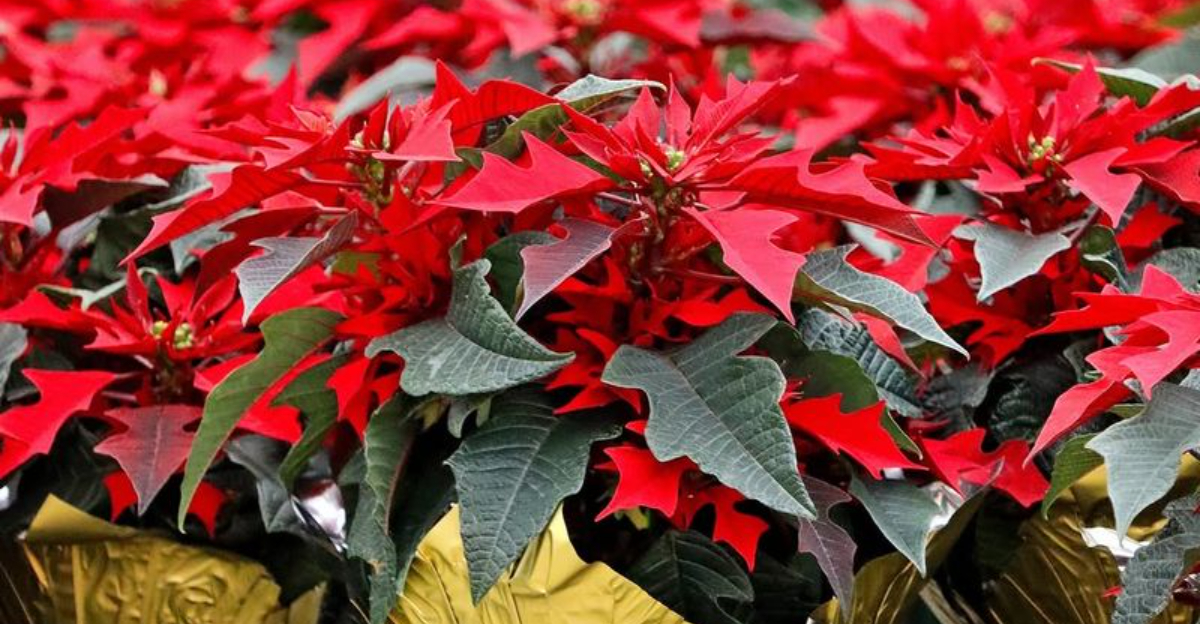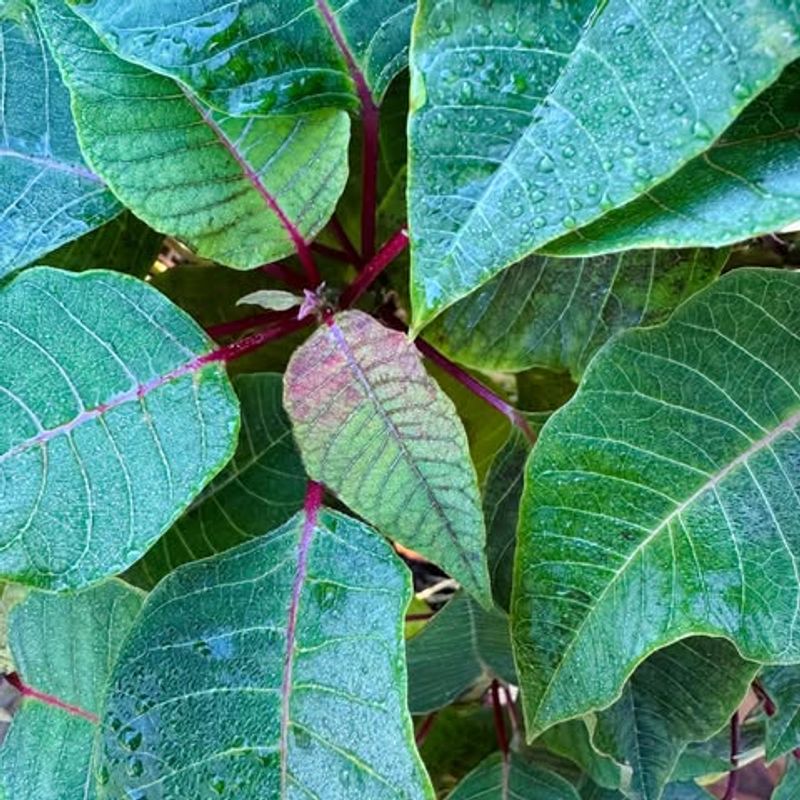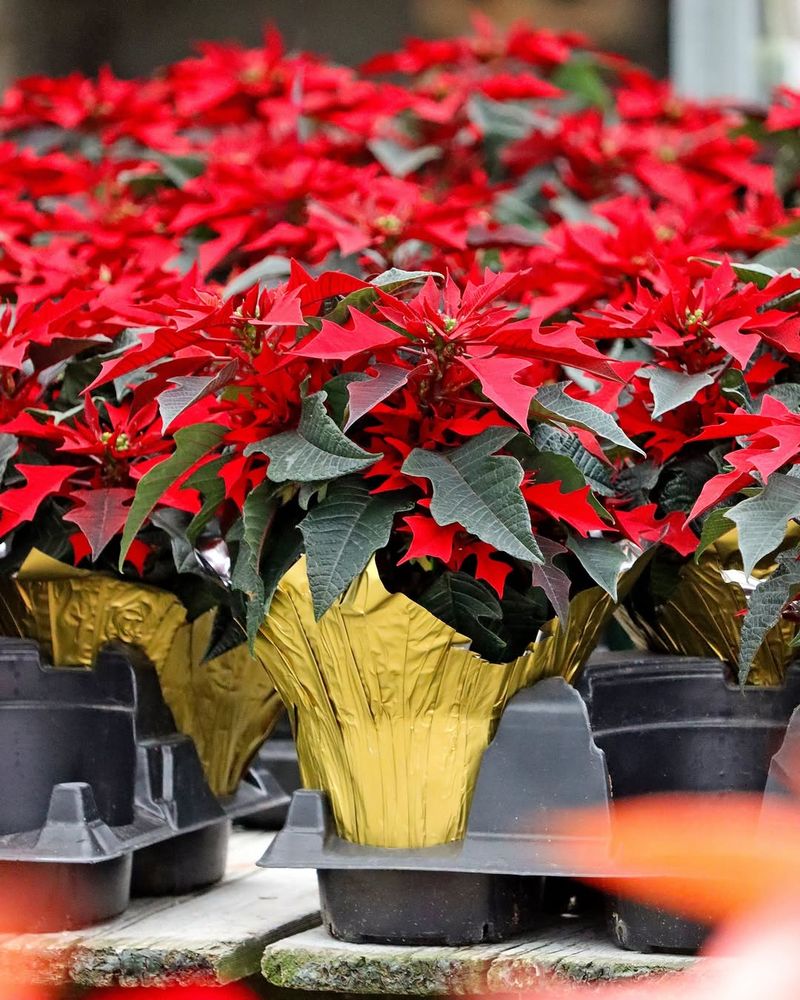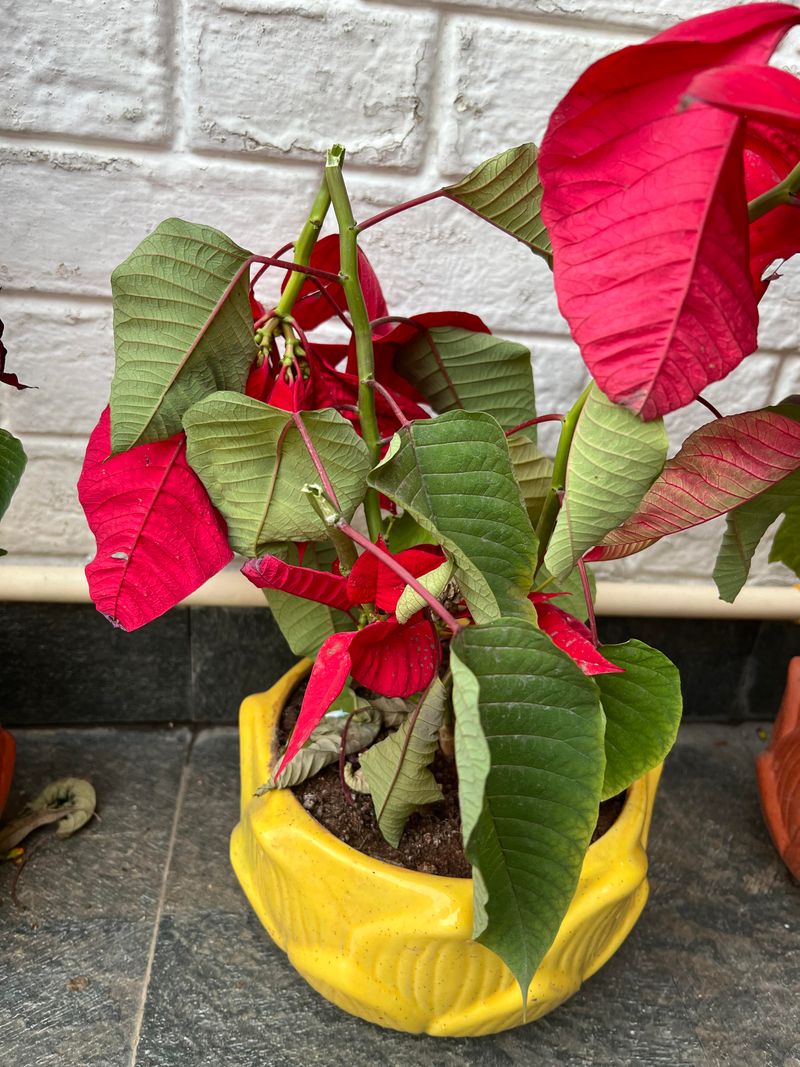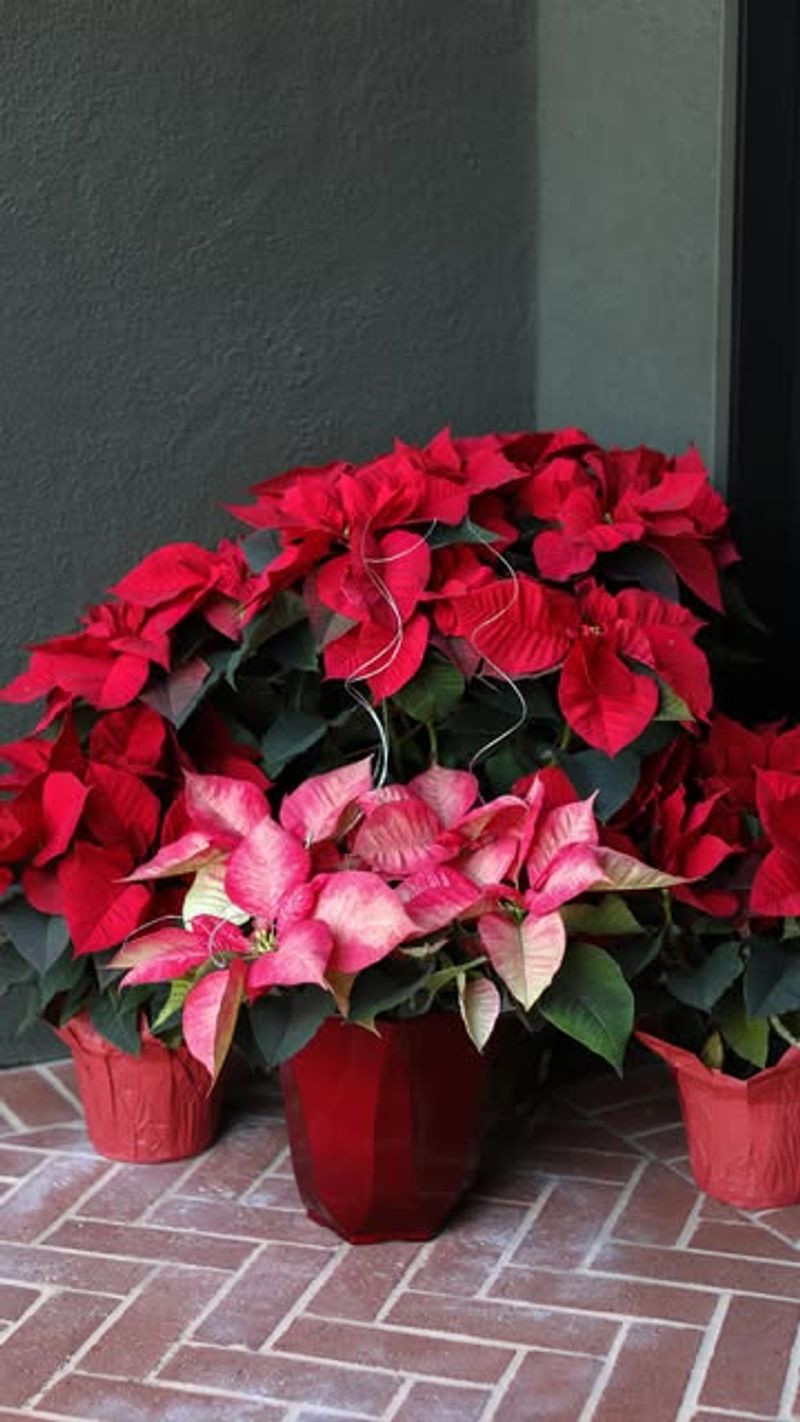Poinsettias bring festive cheer to homes during the holiday season with their bright red and green leaves. However, keeping these tropical plants happy in Minnesota can be quite challenging.
The cold climate and indoor heating conditions create obstacles that make poinsettia care more difficult than in warmer states.
Understanding what makes Minnesota homes tough for these cheerful plants will help you keep them looking beautiful all season long.
Brutal Cold Temperatures During Transport
Bringing a poinsettia home from the store can be dangerous when temperatures drop below freezing. Even a few minutes of exposure to Minnesota’s icy air can damage the delicate leaves, causing them to wilt or turn black.
Poinsettias originally come from Mexico, where frost never touches them. Temperatures below 50 degrees Fahrenheit stress these tropical beauties significantly.
Always wrap your plant completely in paper or plastic before heading to your car. Keep the heater running and make the trip home as quick as possible to protect your festive purchase.
Dry Indoor Air From Heating Systems
Minnesota winters mean cranking up the furnace, which sucks moisture right out of the air. Poinsettias need humidity levels around 50-60 percent, but heated homes often drop to a desert-like 20-30 percent.
When the air gets too dry, leaf edges turn brown and crispy. The plant may start dropping leaves faster than you can sweep them up.
Try placing a shallow tray filled with pebbles and water beneath your poinsettia. As water evaporates, it creates a humid microclimate around the plant without making the roots soggy.
Limited Natural Sunlight In Winter Months
December days in Minnesota are short and often gloomy, with the sun setting before dinner time. Poinsettias crave bright, indirect light for at least six hours daily to maintain their vibrant color.
Without enough light, the colorful bracts fade and the plant becomes leggy and weak. Cloudy skies and early sunsets make meeting this requirement nearly impossible naturally.
Position your poinsettia near a south-facing window where it catches maximum daylight. You might also consider using a grow light to supplement during particularly dark stretches of winter weather.
Inconsistent Temperature Fluctuations
Poinsettias prefer steady temperatures between 65-70 degrees Fahrenheit throughout the day and night. Minnesota homes experience wild swings when thermostats get turned down at bedtime or when doors open to frigid outdoor air.
Placing your plant near drafty windows, exterior doors, or heating vents exposes it to temperature roller coasters. These sudden changes shock the plant, causing leaf drop and overall decline.
Find a spot away from cold drafts and direct heat sources. Avoid areas where people frequently come and go, bringing blasts of cold air with them each time.
Overwatering Due To Unclear Moisture Needs
Many Minnesota plant owners destroy their poinsettias with kindness by watering too frequently. These plants dislike sitting in soggy soil, which causes root rot and yellowing leaves.
Cold homes and low light mean poinsettias use water much slower than during summer. The decorative foil wrapping many come in traps excess water at the bottom, drowning roots without you realizing it.
Always remove decorative foil or punch drainage holes in it. Water only when the top inch of soil feels dry to your touch, then let excess drain completely away.
Stress From Rapid Environment Changes
Garden centers keep poinsettias in ideal greenhouse conditions with perfect humidity, lighting, and temperature control. Moving them to a typical Minnesota home creates immediate environmental shock.
Plants need time to adjust gradually, but the dramatic shift from nursery to living room happens in minutes. This sudden change stresses the poinsettia, often causing it to sulk and drop leaves within days of purchase.
Choose the healthiest-looking plant at the store with no yellowing or dropped leaves. Give it a consistent spot in your home and avoid moving it around while it acclimates to its new surroundings.

